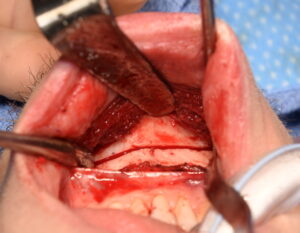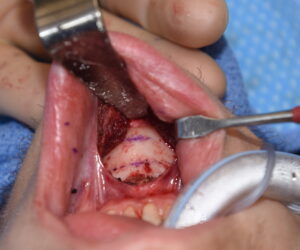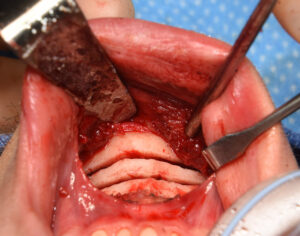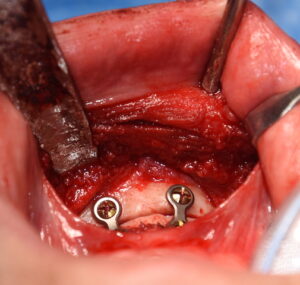There are numerous aesthetic chin surgeries which largely differ by the dimensions that are being changed. Chin reduction, just like chin augmentation, can be done in all three dimensions. (decreased horizontal projection, decreased height and decreased width) Such chin reductions are usually multidimensional (e.g., decreased projection and less height) and some even combine a reduction and an augmentation change. (e.g., less width and more projection)
Probably the least common reductive chin change is vertical or height reduction. This is for the long chin which has good projection and adequate width. This is typically viewed as a long lower third of the face and is often done to balance out the proportions of the facial thirds. (facial shortening)
While pure vertical chin reduction can be done from a submental approach by excision of the lower end of the chin bone, it is probably preferred in most cases to do it by an intraoral approach. With the intraoral approach a wedge of vertical chin bone is still removed. But instead of at the bottom of the chin bone by ostectomy, which requires complete degloving of the attached soft tissues, it is done by osteotomy in the middle of the chin bone. (interpositional removal) This has the advantage of keeping the soft tissues attached to the lower edge of the chin bone where they move upward with it as the bone is put back together.



While very effective it is important to point out that anterior chin shortening will disrupt the smooth inferior border line of the lower jaw from the jaw angles to the chin. As the chin is shortened the anterior line of the lower jaw is turned a bit upwards. This is mainly reflected in being able to feel a bump where the lateral osteotomy line ends. Healing will soften this bony bump but it will always be there to some degree.
Dr. Barry Eppley
Indianapolis, Indiana






